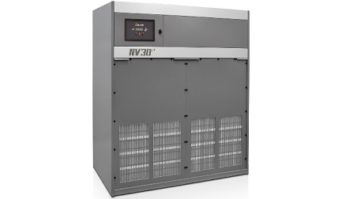More engineers would like to use some of the new format codes adopted as part of the Radio Broadcast Data System standard in the United States in 2011.
The standards document for RBDS in the United States was revised that April when NRSC-4-B was finalized. As part of that, the new Program Type (PTY) codes 24 (Spanish talk), 25 (Spanish music) and 26 (hip-hop) were introduced.
This update also affects HD Radio, for HD SIS Program types 0-31, NRSC-5C (document SY_IDD_1020s) states: “See the RBDS Standard, NRSC-4.” Thus, NRSC-5 will always be in sync with the PTY codes in RBDS. Obtain a copy of the NRSC-4-B standard at http://nrscstandards.org/standards.asp.
It’s been more than three years since the new Program Type codes were adopted, so I set out to do some limited testing of this support. Even in some of the latest receivers I have available for testing, support for these new formats seems to be limited. That’s not to say some receiver manufacturers haven’t implemented the new PTY codes, but like many things, it takes a while for changes to standards to be adopted by the industry. Receivers that do not support these new PTY codes often show a blank, no information, in place of the station format, as shown in Fig. 1.


In Figs. 1 and 2, the station is transmitting PTY=26 for hip-hop. Notice in Fig. 1 that the area circled in red is blank because the older JVC KW-NT3HDT receiver was made before PTY Codes 24, 25 and 26 were defined in NRSC-4-B. The newer model JVC KW-NT810HDT, Fig. 2, shows hip-hop because it supports the new codes.
Photo credit:
Photos by Alan Jurison
Full adoption of these three codes requires participation of three major groups:
Receiver Manufacturers should be encouraged by broadcasters to review NRSC-4-B to see the changes. The new PTY codes are important because as the demographics of the United States change, so too does radio programming to serve growing ethnic populations.
An increasing number of stations are airing programs in Spanish. Similarly, the hip-hop format is very popular.
In the United States, there were 11,339 total licensed commercial AM/FM radio stations in 2013, according to the FCC. Of those, 956 were Hispanic-formatted in 2013, according to BIA/Kelsey. That compares to 853 five years ago and 696 in 2003.
Industrywide numbers for the hip-hop format are harder to locate, mainly because the industry traditionally has considered hip-hop as R&B. But, over the years the hip-hop genre has come to be a major part this category, thus why stations were asking for a hip-hop PTY code.
On the iHeartRadio streaming platform, which contains owned and operated stations from iHeartMedia, and also other non-owned partner stations, there were approximately 124 terrestrial stations that identified as in the hip-hop and R&B category in late November. This category includes hip-hop, urban AC, R&B and stations that provide a mix of this genre. Of those 124, 57 (46 percent) identified themselves as primarily hip-hop stations in their positioning statements.
Radio receiver manufacturers are key here. With limited radios on the marketplace supporting the new codes, broadcasters lack significant incentive to transmit them. Stations are ready to implement the codes but need the help of receiver manufacturers to provide a better experience for their customers and our listeners.
Broadcast Equipment Manufacturers should update their product designs to support these codes, including those that manufacture RDS/RBDS encoders, HD Exporter/Importer equipment and broadcast monitoring receivers. Confirming that the equipment can transmit and decode PTY codes 24, 25 and 26 properly is important.
Similarly, manufacturers should update setup programs or the graphical user interface to include these formats. Since many station engineers refer to their product manuals when configuring devices, the associated documentation/manuals should be updated to help broadcasters transmit these codes.
I have found that many encoders can easily be set to the new codes, but much of the documentation aspect of this has not been updated. That being said, I encourage equipment manufacturers to conduct full end-to-end testing to ensure products are NRSC-4-B compliant.
Broadcasters should request that their equipment vendors support these new codes and raise awareness of their desire to transmit these new PTY codes on applicable stations. Similarly, broadcasters that communicate with receiver manufacturers should encourage them to look at the new codes and consider updating their designs.
I think in time, as information about these new PTY codes continues to spread, we will see increased adoption from receiver manufacturers. Once a critical mass of updated receivers is on the market, broadcasters can transmit the new codes that are more appropriate for the growing number of stations for these radio formats.
This is a continuation of our series “Get the Most Out of RDS.” Read past articlesatwww.radioworld.com/rds.
Alan Jurison, CSRE CBNE AMD DRB, is a senior operations engineer for iHeartMedia’s Engineering and Systems Integration Group. He chairs the NRSC RDS Usage Working Group. His opinions are not necessarily those of iHeartMedia, the NRSC or Radio World.





